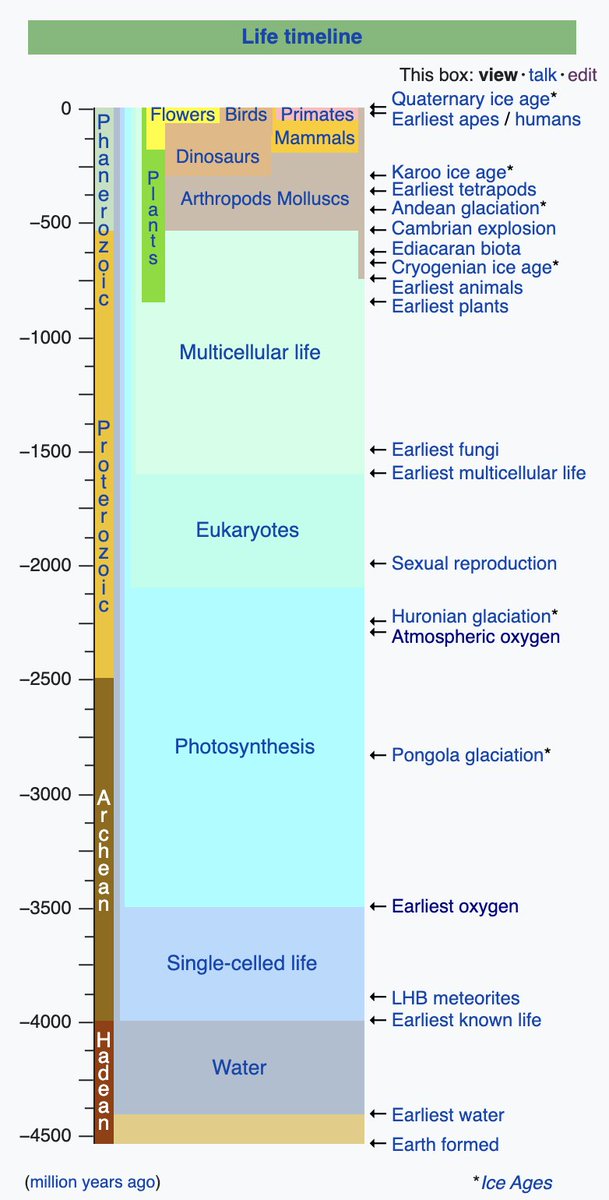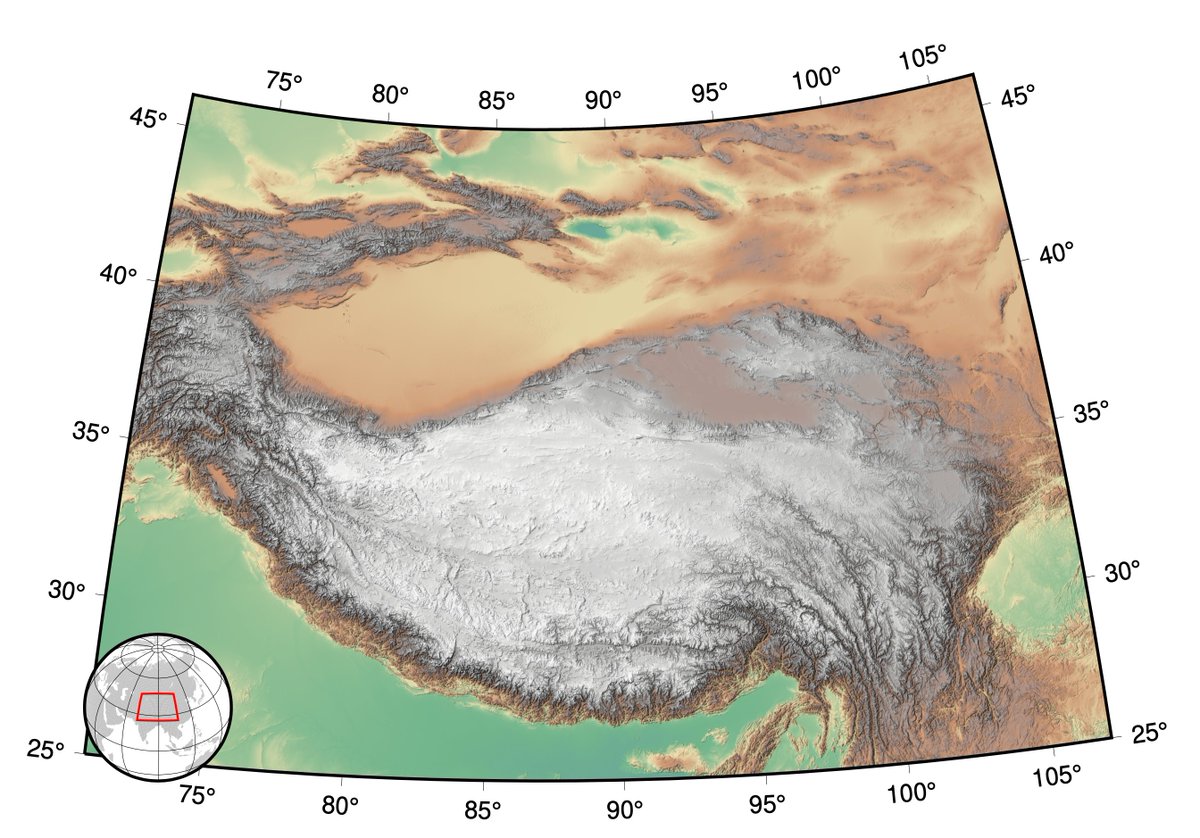
2.4 billion years ago, Earth's atmosphere was free of oxygen. Iron didn't rust! Only anaerobic species could survive.
And then ... cyanobacteria evolved photosynthesis, and began to pump oxygen into the atmosphere.
Oops.
🧵 1/n
#GreatOxygenationEvent
en.wikipedia.org/wiki/Great_Oxi…
And then ... cyanobacteria evolved photosynthesis, and began to pump oxygen into the atmosphere.
Oops.
🧵 1/n
#GreatOxygenationEvent
en.wikipedia.org/wiki/Great_Oxi…

Suddenly, iron dissolved in the oceans bonded with oxygen and precipitated, forming layers of rust on the ocean floor. The deposits got thicker and thicker, reaching 100s of meters. 60% of iron is mined from these layers! 2/n
#bandedironformations
en.wikipedia.org/wiki/Banded_ir…
#bandedironformations
en.wikipedia.org/wiki/Banded_ir…

Methane was no longer stable: it reacted with oxygen to form CO2. Methane is a far more powerful greenhouse gas - so dropping methane levels triggered sudden cooling. The Earth froze over, with glaciers reaching as far as the tropics. 3/n
#snowballEarth
theconversation.com/billions-of-ye…
#snowballEarth
theconversation.com/billions-of-ye…
How do you break out of snowball Earth? Ice reflects sunlight, so with more ice, Earth absorbs less heat. It might have stayed frozen over forever, except that volcanoes kept pumping carbon dioxide into the atmosphere, increasing greenhouse gases. 4/n
en.wikipedia.org/wiki/Snowball_…
en.wikipedia.org/wiki/Snowball_…

Oxygen continued to accumulate in the atmosphere, and began to poison the anaerobic bacteria that dominated the oceans.
This was the world's first #massextinction.
5/n
slate.com/technology/201…
This was the world's first #massextinction.
5/n
slate.com/technology/201…
A handful of species survived the oxygen and the glaciations. But it wasn't until over a billion years later that these evolved into Earth's first plants and animals. Our ancestors, and those of all life we know today.
6/end
6/end

• • •
Missing some Tweet in this thread? You can try to
force a refresh














